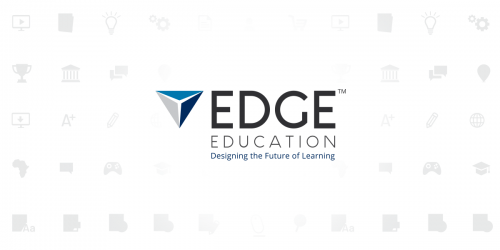Digital, digital, digital. Everything we do these days tends to take place on a digital or online platform. This has led to an increasing number of publishers digitising textbooks, to meet the needs of the modern learner. But are we digitising content in the right way?
Both the production and sales of electronic textbooks are growing in number, year-on-year. We now inhabit an era in which modern learners can attend their classes with nothing but a laptop, tablet or smart device. The advantages are evident: e-books are often cheaper than their hardcopy counterparts, and they also eliminate the need to carry heavy books between classes. Additionally, they can all be accessed via online libraries and across numerous devices – allowing learners to make use of them anywhere, and at any time. There is also the added benefit of being able to highlight the text or make annotations, without causing any lasting damage.
Despite the many advantages presented by e-books, however, sceptics still question whether this ‘paper behind glass’ version is a suitable replacement for the traditional textbook. Is this really best for the contemporary learning environment? And is it actually what students want?
For many, the answer is still a resounding ‘no’.
The downside of digital textbooks:
A few notable drawbacks have been highlighted with regard to electronic textbooks in particular. In recent years, many studies have concluded that students still prefer studying from paper, rather than from pixels. For instance, a study conducted by Daniels and Jakobsen at James Madison University found that 75% of students favoured paper-based textbooks; moreover, 60% of these said that they would still buy a physical copy of the textbook, even if they were given a free digital version.
But why do tech-savvy millennials still prefer hardcopy textbooks to digital formats?
Some reasons may include the following:
- Navigation: When reading on screen, we tend to scan the text in an ‘E/F pattern’, rather than reading line-by-line, and from left to right. This causes us to skip portions of the content. (See the figure below.)
- Familiarisation: The act of turning a page creates spatiotemporal markers, which help the reader to orientate themselves and form memories of the content.
- Connection: Reading from paper leads to increased emotional investment. This results in greater enjoyment and motivation, which in turn, aids comprehension and retention.
- Engagement: The effect of handling a book makes the act of reading more tangible to the senses, which increases engagement of spatial memory, heightens emotional processing, and enables greater internalisation of the material.
- Efficiency: It takes less time and energy to reach the same level of comprehension when processing printed text.
- Retention: Overall, there is improved retention and comprehension when reading from paper, rather than on screen.
- Reduced eye strain: Unlike hardcopy formats, screen-based texts can lead to eye strain and headaches.
So how should content be digitised?
So, considering the high demand for digital resources, how do we go about addressing their downsides?
The answer may just lie with instructional design. By taking written materials, instructional designers segment and ‘chunk’ the content, shaping it into a digital-friendly format. This process results in media-rich resources that are specifically geared toward the online environment, thus providing learners with the optimal e-learning experience. These media-rich digital resources can include anything from videos, to quizzes, animations, interactions, and more.
As technology advances, so too must we adapt – both personally and professionally. One strong example of this is the film industry, which has undergone dramatic changes over the last few decades. This can be seen with the advances in screen resolution, for instance. The introduction of high-definition (HD) film has caused industry professionals to change their approaches entirely – ranging from their filming techniques, to special effects, costume and set design, and so on. What used to look impressive in a standard-definition (SD) film, now looks comparatively subpar, especially when displayed on newer HD screens.
The same applies to how we learn. From this perspective, it is worth acknowledging that physical textbooks were not originally intended for online consumption. What has traditionally worked with paper-based learning, will therefore not necessarily yield the same results in a digital format. As such, digitisation techniques also need to adapt, develop and evolve, in order to achieve the ideal outcome.
This consideration most likely accounts for the prolific success of the instructional design industry. To date, it has not only mastered the digitisation of learning materials, but has also helped the modern education environment to improve student engagement, increase retention of information, and enhance learner satisfaction overall. As something that was created specifically for the digital space, it seems only logical that instructional design would naturally achieve better results in this context.
Final thoughts:
Where does this leave the traditional textbook, then? Should paper-based learning be discarded, in favour of these media-rich, instructionally designed educational resources?
In light of our multifaceted learning environment, it should be clear that the answer to this is neither simplistic nor reductionist. As such, the modern educator should seek to put the strengths of both of these resources to use, in the right place, and at the right time – thereby creating a powerful partnership between paper and pixel.


